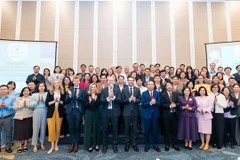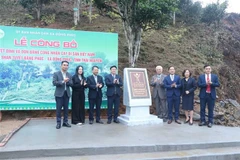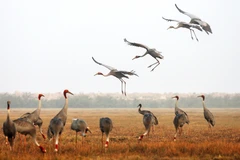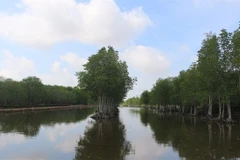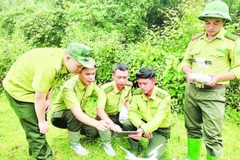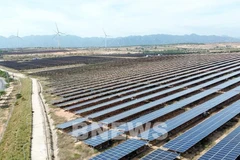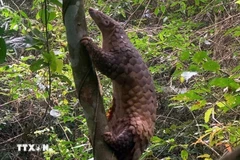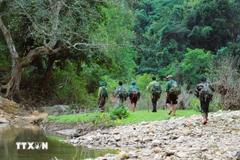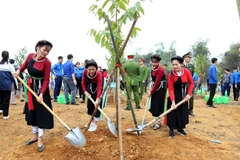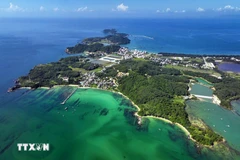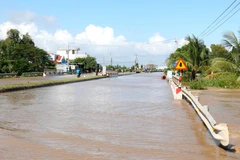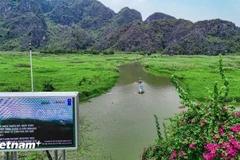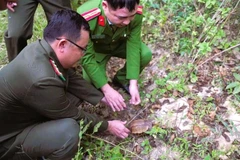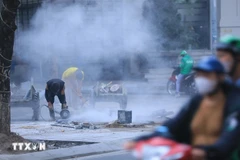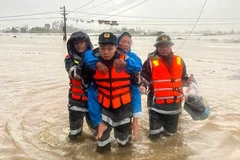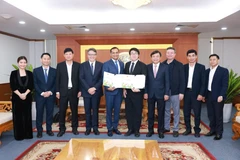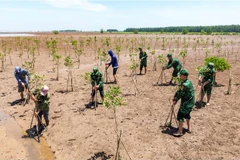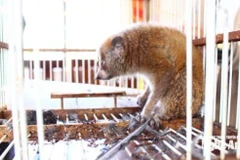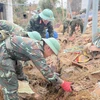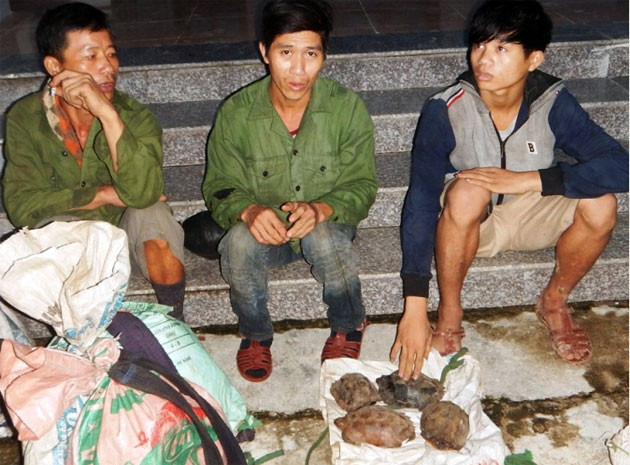 Three of 11 individuals in connection with the three large illegal traps are detained. (Source: nhandan)
Three of 11 individuals in connection with the three large illegal traps are detained. (Source: nhandan)
Wild animal traps were found in Phong Nha-Ke Bang National Park in the central province of Quang Binh, the Park’s management board said on October 11.
Park rangers detained 11 individuals in connection with three large illegal traps. They also seized nearly a dozen trapped rare animals, tools and wild animal remains.
Doan Thanh Binh of the Legislation and Investigation Department under the Park’s Range Unit said measures were being taken to prevent wild animal hunting and handle violators during the eighth and ninth months of the lunar year.
Located in Bo Trach District, Phong Nha-Ke Bang National Park covers 85,754 hectares with a 195,400-hectare buffer zone. It is among the 238 most important ecological zones in the world.
The property contains more than 104 kilometres of caves and underground rivers, and is considered one of the most outstanding limestone karst ecosystems in the world. The karsts are believed to have been formed during the Palaeozoic period (some 400 million years ago), making the park the oldest major karst area in Asia.
The park is home to a large amount of flora and fauna, with 849 recorded vertebrate species. This includes a number of endemic species, as well as threatened species, including tigers, Asiatic black bears, Asian elephants, giant muntjacs, Asian wild dogs and the recently discovered sao la deer.
Nineteen new species have been discovered in the park, including 14 reptiles, one amphibian, two scorpions and one bird-VNA


